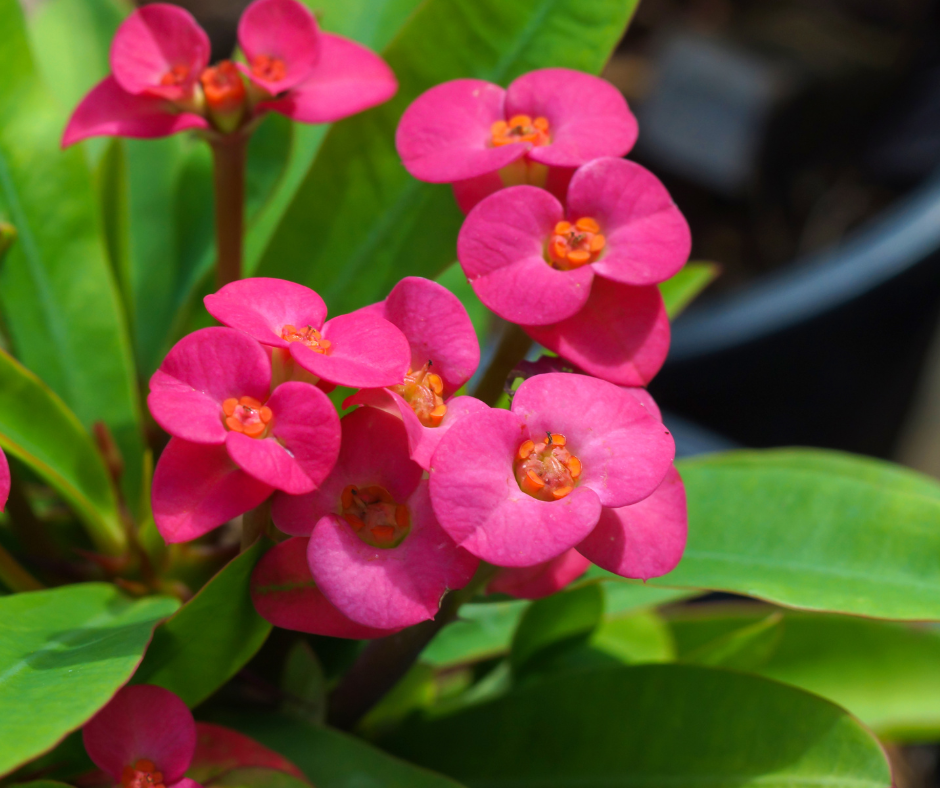لا توجد منتجات في سلة المشتريات.
Euphorbia Milli (شوكة المسيح)
15.00 AED VAT
It is a woody succulent subshrub or shrub growing to 1.8 m (5 ft 11 in) tall, with densely spiny stems. The straight, slender spines, up to 3 cm (1.2 in) long, help it scramble over other plants. The fleshy, green leaves are found mainly on new growth, and are up to 3.5 cm (1.4 in) long and 1.5 cm (0.59 in) broad. The flowers are small, subtended by a pair of conspicuous petal-like bracts, variably red, pink or white, up to 12 mm (0.47 in) broad. Wat Phrik in Thailand claims to be the home of the world’s tallest Christ thorn plant. The plant thrives between spring and summer but produces flowers all year round.
16 متوفر في المخزون
Crown of Thorns is a deciduous, herbaceous, perennial shrub with bright green leaves and greenish flowers.
Crown of Thorns grows best in dry to medium moisture, well-drained soils in full sun. Because it does not like wet, cold soils or temperatures below 35 degrees F. It is an easy to grow indoor plant where it prefers a sunny location in soil-based potting mix. If grown outside in hot summer climates, provide the plant with midday shade and moderate moisture for better flower bloom.
Sticky, showy, paired-bract flowers on gray stems with long spines identify this plant. Cyclical leaf drop is normal, but messy and preceeds the plant’s resting season (usually winter). The flowers will bloom throughout the year. The long spines are dangerous to inattentive gardeners, children and pets. The plant is often used as a specimen plant for interiors with high light or as annual outdoor plant.
Crown of Thorns prefers bright light, dry soil and low relative humidity. You can propagate the plant from cuttings, but let sap dry before placing the cutting in a growing medium.
Common Name(s):
- Christ Plant
- Christ Thorn
- Crown of Thorns
- Crown-of-thorns
Diseases, Insects, and Other Plant Problems:
No known serious pests or diseases. As with most indoor plants, potential disease pests include leaf spots, stem and root rots and botrytis blight. Potential insect pests include scale, mealybug, thrips. and mites.
Toxicity
The sap is moderately poisonous, and causes irritation on contact with skin or eyes. If ingested, it causes severe stomach pain, irritation of the throat and mouth, and vomiting. The poisonous ingredients have been identified as phorbol esters It is very toxic to domesticated animals such as, horses, sheep, cats and dogs. For humans it is mildly toxic and only acts as an irritant.
| Choose Height | 5 Ltr pot 5-7 cm Ht, 6 Ltr pot 5-7 cm Ht |
|---|---|
| Color | Purple |
| Origin | Local |





